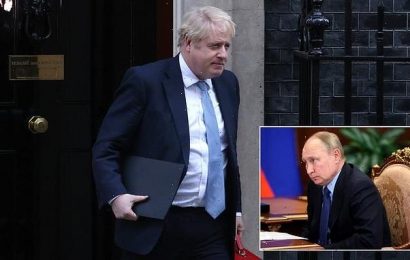MINISTERS are facing growing calls to cancel vocational exams amid concerns over students' safety and fairness.
It comes as Boris Johnson said pushing ahead with all exams this summer "as normal" would not be possible
What is a BTEC Diploma?
BTECs are qualifications that are vocational rather than purely academic.
You could study a BTEC at Level 2 or 3, either alongside academic qualifications or as part of a wider programme (such as an apprenticeship). You can also study a BTEC as a standalone course.
Some BTEC courses available include (but are not limited to):
- applied science
- art and design
- business
- childcare
- construction
- engineering
- media
- health and social care
- hospitality
- ICT
- land-based
- performing arts
- public services
- sport
- travel and tourism
What does BTEC stand for?
BTEC stands for the Business and Technology Education Council.
Are BTEC exams going ahead in 2021?
Pearson, which runs the BTEC exams, said that the Department for Education had said that vocational exams will go ahead in January as planned.
A statement from Pearson on Twitter said: "We are working with them urgently to understand the implications of this and will share any updates as soon as we have them."
What are the different kinds of BTECs?
There are three main kinds of BTECs, each with their own sub sections.
BTEC Firsts are available from entry-level to Level 2. These offer an introduction to work in a vocational sector. Combined with other qualifications, these can enable you to go on to further study, to an apprenticeship, or into employment.
BTEC Nationals are available from Level 3. Many of these are well regarded by universities and employers. A BTEC National qualification can lead to employment, continuing study, or professional development programmes.
Finally, BTEC Apprenticeships are available at Levels 2 to 5 across more than 25 sectors.
BTECs are divided into units, which cover specific areas of knowledge, skills, and understanding required by the particular sector or industry.
- Every BTEC student takes the core units, which provide a broad foundation and understanding about the sector.
- There is a range of optional units to choose from which enable students to focus on particular interests and plans they have for next steps in their lives.
- The course involves a series of assignments which can be written or activity-based, for example creating a film clip, planning and putting on a performance, or creating a business plan.
What are UCAS Tariffs?
UCAS Tariff points translate your qualifications and grades into a numerical value. BTECs have a UCAS Tariff value, which will vary dependent on the qualification size, and the grade you achieved.
Some universities and colleges refer to UCAS Tariff points in their course entry requirements.
For example, to study English Literature BA at Sussex University you will need A-Level grades of ABB or Pearson BTEC Level 3 National Extended Diploma DDM, which is equivalent to 128.
You can calculate your tariff points here.
What is the BTEC to UCAS value?
There are so many specific types of BTECs and each grades are valued differently.
If you are not sure what kind of BTEC you or your child is studying then it is worth asking your school or college.
The different grade letters mean:
D* = Distinction *
D= Distinction
M= Merit
P= Pass
Pearson BTEC Extended Diploma (QCF)
DDD* = 168
DDD = 160
D*DD = 152
DDD = 144
DDM = 128
DMM = 112
MMM = 96
MMP = 80
MPP = 64
PPP = 48
Pearson BTEC Diploma (QCF)
DD = 112
D*D = 104
DD = 96
DM = 80
MM = 64
MP = 48
PP = 32
Pearson BTEC 90-Credit Diploma (QCF)
DD = 84
D*D = 78
DD = 72
DM = 60
MM = 48
MP = 36
PP = 24
Pearson BTEC Subsidiary Diploma (QCF)
D* = 56
D = 48
M = 32
P = 16
Pearson BTEC Certificate (QCF)
D* = 28
D = 24
M = 16
P = 8
Pearson BTEC Level 3 National Extended Diploma
DDD* = 168
DDD = 160
D*DD = 152
DDD = 144
DDM = 128
DMM = 112
MMM = 96
MMP = 80
MPP = 64
PPP = 48
Pearson BTEC Level 3 National Diploma
DD = 112
D*D = 104
DD = 96
DM = 80
MM = 64
MP = 48
PP = 32
Pearson BTEC Level 3 National Foundation Diploma (510-540 GLH)
D* = 84
D = 72
M = 48
P = 24
Pearson BTEC Level 3 National Extended Certificate
D* = 56
D = 48
M = 32
P = 16
Pearson BTEC Level 3 National Certificate
D* = 28
D = 24
M = 16
P = 8
Source: Read Full Article












